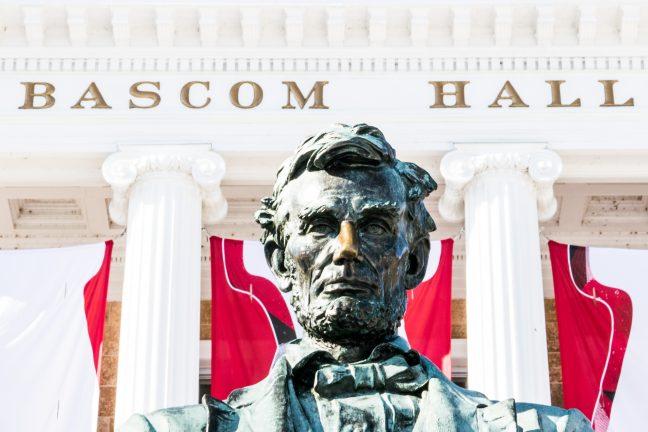University of Wisconsin System Administration announced a proposal to restructure UW College and UW-Extension to address the decline in enrollment rates across the UW-System earlier this month.
Under the proposal, the 13 UW System Colleges would be integrated into 7 UW four-year institutions across the state.
The changes in the proposal would go into effect July 1, 2018, with less than a year for UW System schools to implement the merger. The Board of Regents will meet in November to discuss the proposal.
In a press release, UW System President Ray Cross attributed the restructure proposal to “changing demographics, budgetary constraints and the need for closer alignment between research and practice,” citing statistics from UW-Milwaukee stating 94.7 percent of total population growth will be age 65 and older. Only a small portion of the projected growth, 0.4 percent, will be for a labor population between ages 18 to 64.
Some of these changes are already apparent in high school graduation numbers across the state.
According to the Department of Public Instruction, the state has seen a 10 percent decrease, or 7,106 students, graduating from high school in the past seven years. This deficiency means there are less in-state students available to attend public institutions.
Cross said these demographic trends create enrollment challenges for the UW System — lower enrollment rates signify smaller amounts of revenue dollars for UW System campuses to work with.
First year enrollment across the UW System from 2010 to 2016 has steadily dropped each year with a total decrease of nearly five percent — 7,713 students. Preliminary enrollment statistics for Fall 2017 show a decrease of more than two percent from last year, as reported by the Milwaukee Journal Sentinel.
Collectively, the two-year UW Colleges were hurt the most, seeing a 7.5 percent spike in enrollment, following a 22.3 decrease from last year.
UW-Madison has had a much different experience, however, receiving the highest ever incoming freshman class of 6,610 freshmen students this year, a 2.6 percent increase from last year.
Noel Radomski, Director of the Wisconsin Center for the Advancement of Postsecondary Education, said it isn’t uncommon for UW-Madison to act as an outlier when considering statewide economic trends.
“UW-Madison is always the anomaly, I mean we have so much demand and not enough capacity,” Radomski said. “We have revenue and resources that all the other universities don’t have through the state system, so therefore you would have to basically pull us out of Wisconsin if you want to look at what’s going on.”
Radomski also said comparing current enrollment numbers to 2010 numbers, what he calls “the apex of enrollment,” is not ideal. He argued college enrollment rates naturally change often counter to periods of economic recovery and decline.
But that doesn’t change the fact that UW System colleges still must face major decreases to incoming revenue sources, like declining enrollment, budget cuts and tuition freezes.
Of the four-year institutions, UW-Stevens Point experienced the largest decrease to enrollment, a 6.8 percent decrease in enrollment or 629 students according to preliminary enrollment figures, according to MJS. Those figures also indicated the campus has seen the lowest enrollment numbers in nine years, with 1,570 first year students for 2017.
Looking for new sources of revenue and ways to reduce spending, UW-Stevens Point proposed eliminating the Geography and Geology Department last month. David Ozsvath, chair of the Geography and Geology department, said he was surprised to hear his department would be eliminated.
But the conversation has since been shifted with the new proposal from the UW System. Oszvath said they will continue to review academic programs across the campus, including Geography and Geology, as part of the discussion over the larger restructuring.
“The way I see it, we’re inheriting a bigger problem than we already have,” Ozsvath said.
While Oszvath said he was concerned that any or all of the faculty could have been laid off, he was more concerned with how administration made this decision without input from faculty.
Greg Summers, UW-Stevens Point Provost and Vice Chancellor for Academic Affairs, said the university would work to reduce costs while keeping academic staff. He also said he would keep the option to eliminate tenured faculty positions open moving forward.
“I’ve told [faculty] it is a distinct possibility that we will see the elimination of tenured positions, but it’s only a possibility,” Summers said. “We haven’t eliminated a tenured position since the early 1970s, so that statement carries some significant impact and I recognize that.”
Radomski said under the system merger proposal, other UW System institutions are going to have to make tough decisions, like UW-Stevens Point, on how to best consolidate their resources in short time span.
And while Radomski admitted there isn’t enough information available about this plan to understand whether this plan will be beneficial for the university, he said that’s precisely why the UW System can’t go forward with this plan.
“When you do these restructuring things, you don’t do it without consultation [of] people who actually have to change [the structure of their department],” Radomski said.


